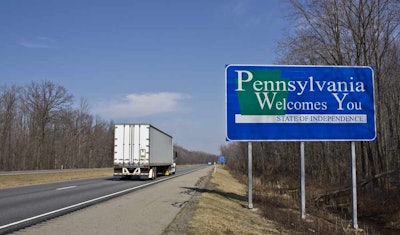
Age is just a number, so the saying goes. While that may be true for relationships, it may not apply to truck driving.
The U.S. Senate renewed the debate over the appropriate age for interstate commercial truck drivers last month when it introduced a companion bill to H.R. 5358 – Developing Responsible Individuals for a Vibrant Economy (DRIVE-Safe) Act – first introduced in the House in March.
The legislation would direct the U.S. Department of Transportation to develop and regulate an apprenticeship program for under-21 drivers to operate commercial vehicles in interstate commerce while completing two probation periods.
The first probationary period is 120 hours with at least 80 hours’ drive time under the supervision of an experienced driver, followed by a 280-hour probationary period with at least 160 hours of driving time accompanied by an experienced driver in which they have to demonstrate proficiencies in backing and maneuvering, fueling procedures, trip planning, permitting and more.
The push to rewrite the federal minimum age requirements to operate a commercial vehicle across state lines comes at the height of a severe driver shortage that has fleets scrambling to fill seats.
Many fleets that steadfastly hired only experienced drivers now are relaxing those requirements. According to data from Transport Capital Partners and Driver iQ, the number of carriers hiring entry-level drivers has increased 80 percent since 2012.
“The trucking industry’s shortage of drivers threatens our economy,” said Chris Spear, president and chief executive officer of the American Trucking Associations, in support of the bill. “The DRIVE-Safe Act would open the door to millions of Americans who are seeking a career and a path to the middle class by training young men and women to safely and reliably move freight across state lines.”
Should the DRIVE-Safe Act – or some future iteration of it – eventually be signed into law, fleets should take a long look at the level of commitment it will take to identify and hire the right job candidates and implement new apprenticeship training standards.
I recently gained some perspective on this while accompanying my 15-year-old daughter to the local department of motor vehicles to get her learner’s permit last month. She sat nervously waiting on her number to be called to take her written test, no doubt thinking about her newfound freedom should this yearlong permit period go as well as she hopes.
I sat next to her, thinking of how I might spend my extra time after work when she gets her driver’s license and assumes some of the driving responsibilities to and from school, sports practice and music lessons. Suddenly I was struck with the enormous task in front of me and her mother to teach her the rules of the road over the next year under our supervision.
The trepidation experienced by me and the millions of fathers before me when preparing to hand over the keys of a passenger car to a 16-year-old should pale in comparison to that of a fleet owner handing the keys of a big rig to someone who only has two or three years of passenger car driving experience themselves.
That’s not to say new rules for under-21 interstate CDL drivers can’t – or shouldn’t – be passed. In fact, I’m all for it under the right circumstances. As language in the bill states:
“Nothing in this Act prevents an employer from imposing additional requirements on an apprentice taking part in an apprenticeship program …”
If carriers are going to take part in under-21 apprenticeship programs, the purpose has to be for more than to simply fill empty seats today. They must develop programs that exceed proposed minimum requirements to ensure the industry is adequately attracting, training and retaining the type of labor force that will help mitigate the driver shortage crisis in the future.












